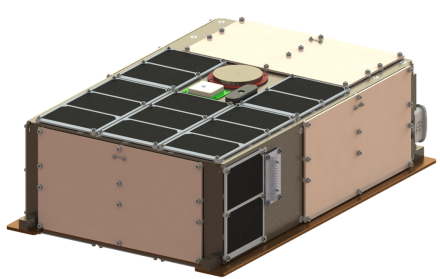WEBS: Wireless Energy from Beamed Signals


WEBS is a 6U CubeSat completely designed and built by Georgia Tech students and faculty from the ground up to meet the specific mission requirements provided by the USSF, AFRL and University Nanosatellite Program (UNP). It will be deployed from the primary AFRL satellite, ARACHNE (pictured above) after being stored for up to several months after launch.

Electrical energy will be collected onboard the primary USSF satellite, ARACHNE, which will transform that electrical energy into a focused beam of RF energy, which will then be received by WEBS and its onboard rectenna panels, which then convert the beamed power back to electrical energy. This incoming energy data will be logged and dissipated. In addition to the primary payload data, WEBS will also supply high resolution IMU data during the CubeSat separation event to meet specific localization and attitude knowledge requirements set by AFRL. Using the collected data, the spacecraft position and attitude data will be correlated with the received power data for analysis.
The spacecraft bus is a fully custom design, created and manufactured by Georgia Tech students in the Montgomery Knight Shop and Aero Maker Space and tested at GTRI. Designed specifically to facilitate the rectenna payloads, the structure takes on a modular design that allows for rapid development and testing.

WEBS will use SSDL manufactured solar panel boards along with custom flight software running onboard a single-board Linux computer on an SSDL custom made motherboard. In addition to the primary commercially supplied power system, WEBS will fly an experimental power system custom designed by SSDL intended to provide a reliable, flexible and cost-effective solution for future SSDL missions. The custom battery pack is shown below.

The video below describes the overall SSPIDR mission that WEBS is supporting.
